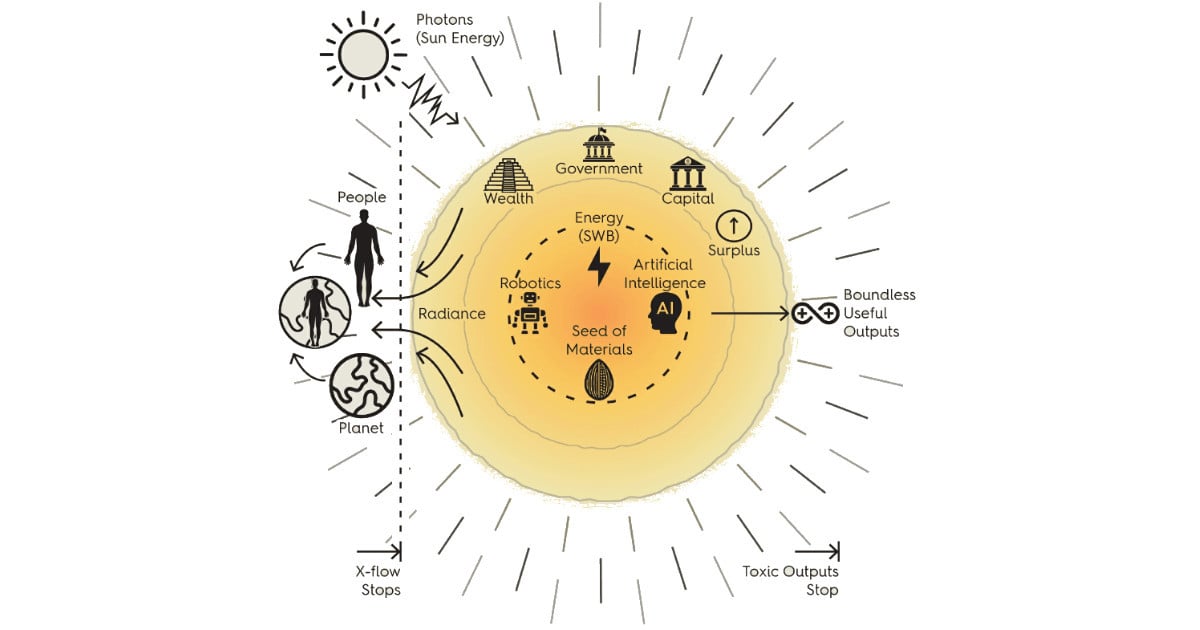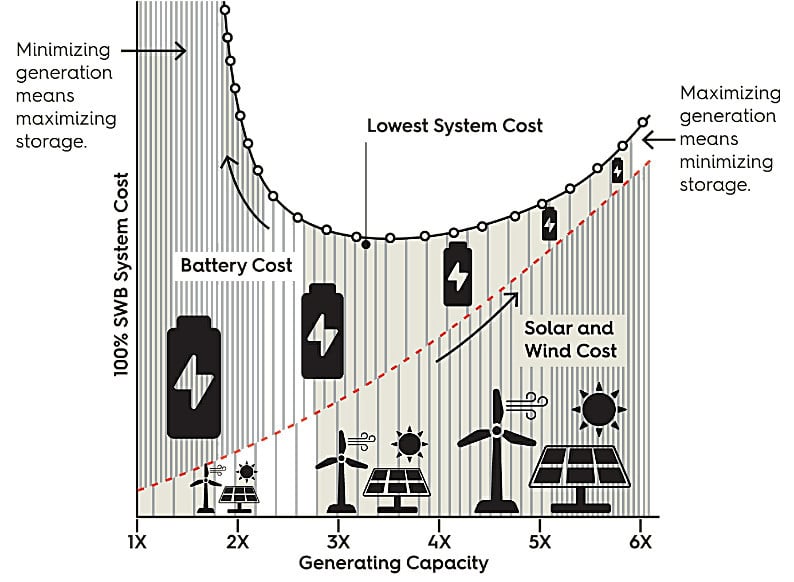Today’s technological advances in renewable energy may be more than they seem; not just disruptive, but capable of halting the X-flow of our extractive production system.
| This post is part of a reading series on Stellar, by James Arbib and Tony Seba. To quickly access all chapters, please click here. Disclaimer: This chapter summary is personal work and an invitation to read the book itself for a detailed view of all the authors’ ideas. |
A Stellar Energy System
The cost of solar panels has dropped by 80% between 2015 and 2025. Over the same period, the cost of wind energy fell by 55% and that of batteries by 90%. These trends are likely to persist in the years to come as technologies continue to advance. In this solar energy system (wind being a by-product of pressure differences arising from temperature changes), the whole is more than the sum of its parts. It’s a fundamentally different system from the extractive one we are used to, since it creates in time its own new properties, behaviors, and metrics.
The graphic on the left illustrates the system cost for various combinations of solar, wind, and battery usage in energy production. According to the authors, this SWB system, as they call it, can generate three to five times more energy than the existing extractive system in place anywhere in the world. It is also the most affordable option. They came to these conclusions after having modeled regions as diverse as India, Brazil, Scotland, Alaska, and Germany. Additionally, “there is no need for any material inputs to keep the system running and no toxic outputs whatsoever. . . . We have the financial resources, there are no material constraints, and no technology breakthroughs are needed.”


